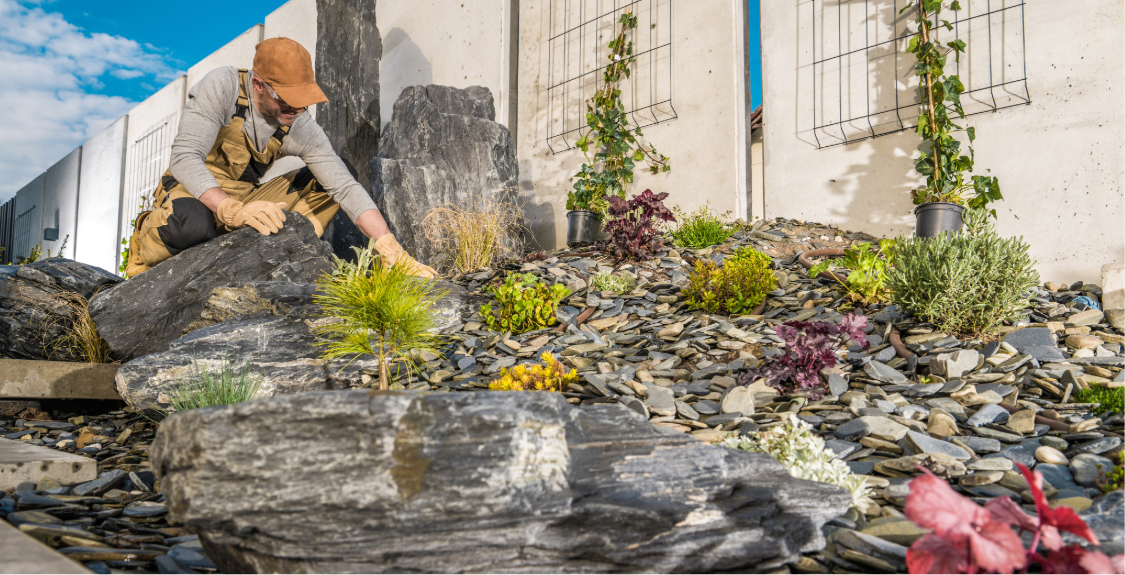AFM NEWS
Protect Your Home From Wildfires With the Home Ignition Zone

By Jennifer Hunt (Content Writer), Nicole Porter (District Manager), and Brian Vrablick (Intermountain Region Manager)
For many in the Pacific Northwest and Intermountain Regions, wildfires are an unfortunate part of life. The hot, dry summers in Washington, Oregon, Idaho, and Montana, and abundant fuels make wildfires a recurring threat. In recent decades, hotter, drier summers and a buildup of flammable vegetation have led to an increase in fire size and severity, especially in drier areas of these states. Fortunately, AFM’s foresters and land managers have extensive experience reducing the risks of wildfires and their devastating consequences. We are prepared to advise clients on ways to keep their property and loved ones safe from the damaging effects of wildfires.
While getting started can feel overwhelming, landowners should begin protecting their property in the area known as the Home Ignition Zone (HIZ). The HIZ encompasses the home and everything around it up to 100 feet or more on steeper slopes. The condition of your HIZ is the primary factor that determines whether your home will survive a wildfire. Homeowners should be aware of the three zones within the HIZ, and they are:
- Immediate Zone (0-5 feet): This area should be free of all combustible materials, and use gravel or rock mulch in landscaping projects. Roofs and gutters should be cleaned regularly to remove debris and other potentially flammable materials.
- Immediate Zone (5-30 feet): Trees and shrubs should be spaced to reduce fire spread, and trees should be pruned to prevent fires from climbing into the canopy.
- Extended Zone (30-100+ feet): The main goal here is to manage vegetation and reduce fuel loads. This can be accomplished by removing dead plants and debris, thinning trees to create space between crowns, and reducing the chance of crown fires.
Once homeowners have optimized their HIZ, they can extend their fire safety readiness into surrounding woodlands. Thinning trees and ensuring they are properly spaced out will reduce the likelihood of a fire spreading rapidly. Minimizing surface fuels and ladder fuels is also of the utmost importance, as dry vegetation on the forest floor can easily catch fire and spread up the tree, eventually climbing up to the canopy. By planting more fire-resistant species (like ponderosa pine and western larch) and keeping larger trees that are more likely to survive, landowners can fortify their forests from wildfire threats. Trees in the HIZ should have large gaps between the crowns, not overlapping branches, to minimize crown fires. By following these time-tested strategies, landowners can reduce the risk of catastrophic fires on their property.
In the event that wildfires do strike, landowners should be prepared to evacuate if necessary. If a level three warning is issued (immediate evacuation), an emergency preparedness kit should include people and pets, important documents, cash/credit cards, prescriptions, electronics, and other irreplaceable items. Communicate with friends and neighbors to ensure they have an emergency plan as well and assist each other as needed.
While wildfires cannot always be avoided, their destructive impact can be mitigated by enlisting the help of AFM’s foresters and land managers. Our natural resources professionals have years of experience creating comprehensive plans for landowners who wish to reduce the fuels risk on their property. Contact us today to learn more about reducing your risk and protecting your most treasured resources.
